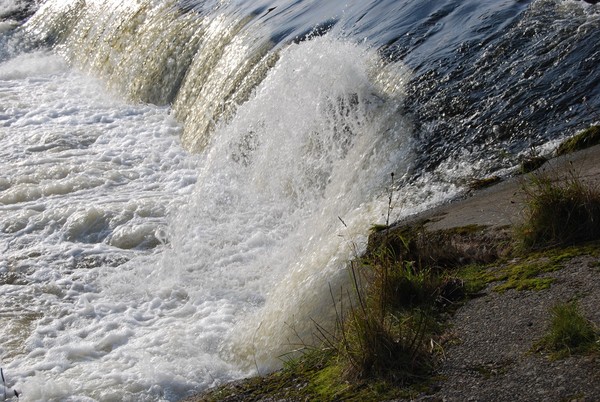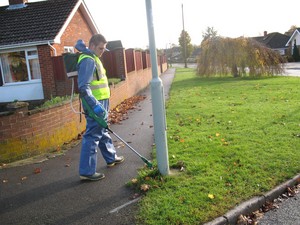Well the field drains have been running and water companies continue to find pesticides in raw potable water supplies. I, like many, get a weekly update (provided by the Voluntary Initiative) of pesticides in some raw potable water sources. I’ve got accustomed to seeing the usual suspects but I was very surprised to see glyphosate mentioned recently in one catchment with levels were above those specified in the EU Drinking Water Directive.
Glyphosate is a very emotive herbicide. Most practical farmers, local councils and, dare I say, nature reserve managers think it is an essential part of their businesses. However, there is a huge effort internationally to discredit it. This is fired by the anti-GM movement who see it as one of their prongs to try to undermine the technology; indeed, anti-GM groups have it in for glyphosate.

This surprises me in two ways. Firstly, glyphosate, theoretically, should not really be moving through soil to water. Secondly, all the data I have seen on its threat to water ecosystems suggest that it is not that hazardous when compared to some other pesticides, which are having proposed EQS standards set.
Then I remembered that a lot of glyphosate is used to control weeds on hard surfaces by councils and others (including very amateur gardeners like me). This can be a very efficient route to watercourses. It is also still used, subject to very specific conditions, for weed control in water. I also have to admit that I don’t have all the data required for me to make a very amateur comprehensive assessment of its threat to water ecosystems.
Exceedances of the EQS would result in a waterbody failing to meet the requirement of the Water Framework Directive. However, I’m very content to see that the one proposed for glyphosate in the consultation is not frightening, and in my opinion, would occur only if there was a spillage fairly directly into a watercourse.
But, as with all pesticides, good practice needs to be adopted. If there should be an exceedance then, other than a spill on a farm, weed control on hard surfaces should realistically be the first port of call in any investigation.
The other significant additions to this UK list of priority substances are pendimethalin, methiocarb (e.g. Draza) and chlorothalonil and much more demanding standards are proposed for these – particularly with the case for methiocarb. So those who are outside areas from which drinking water is sourced cannot relax and should adopt the same stewardship guidelines as those promulgated by the Pelletwise campaign for metaldehyde.
As an aside, a few years ago I attended a vegetation conference in Pompeii. There are several reasons to remember the conference in addition to looking around the remains of the inundated gardens.
The local mayor opened the event and he had a very visibly armed bodyguard standing alongside him on the platform. But the most striking memory was a paper by the then vegetation manager of Glasgow City Council. He described how, due to pesticide legislation, he had had to move from using atrazine/simazine to diuron and finally to glyphosate to control weeds in the streets of Glasgow.
Paradoxically, he said that the number of complaints mushroomed after they adopted glyphosate. With atrazine/simazine and diuron, the single application was carried out in the dead of winter on bare pavements before there was any new growth. With glyphosate, the two or three spraying operations were carried out in the summer when there were more people about and the treated emerged vegetation naturally had symptoms. He added that he never sent a guy out alone to spray the streets of East Kilbride!

